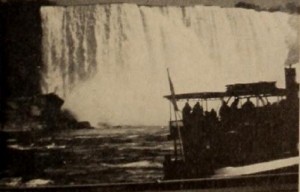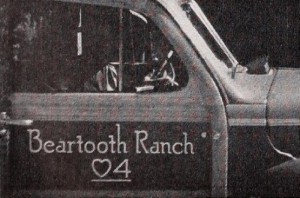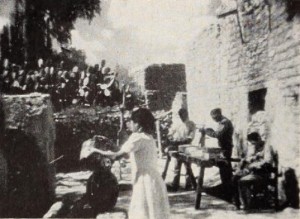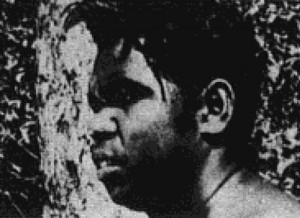"A lover of wild life and good fishing, Russell Jameson has a real fishing picture for those who would like to go into the wilds of British Columbia where the lakes and streams are generously populated with big ones which are willing to make the anglers' acquaintance. Most of the fishing is with barbless hooks for the sport and catch is returned to the stream uninjured. The musical score and sound effects add a great deal to this picture. It will tempt any fisherman with the time and money to indulge in the sport" PSA Journal, Nov. 1958, 48.
"Oscar Horovitz clicks with a second entry in this competition with his 'Tulips, Canals and Wooden Shoes,' documentary on native Holland." American Cinematographer, May 1952, 224.

"In Tumbling Waters Leo J. Heffernan has turned his experienced and competent camera on that perennial favorite of travel filmers, Niagara Falls. The result is a sparkling piece of lighthearted showmanship, climaxed by a truly gripping and probably unique sequence filmed amid the swirling mists of the Cave of the Winds. The overall effect of Tumbling Waters, however, was marred for these reviewers by recurring levities of treatment deemed out of key with the essential majesty of the subject." Movie Makers, Dec. 1949, 471-472.

"Two Dudes In Montana, by Lester F. Shaal, is an engaging and altogether competent record of a dude ranch vacation. In it, two attractive Eastern youngsters are seen adapting themselves with enthusiasm to the strange and stimulating adventures of Western ranch life. Developing his theme deliberately and in carefully integrated continuity, Mr. Shaal shows his tenderfeet taking to the saddle for safaris which progress from an afternoon's outing to full scale pack trips into the high mountains. The producer brings to this subject matter a fine technical skill with movie tools which has long been his. New and rewarding in his present work is an evolving eye for the appeal of human interest." Movie Makers, Dec. 1948, 496.
"In Two Weeks, W. W. Champion has contrived that rare and refreshing thing — a personal record picture implicit with general human interest. Telling the story of a fortnight's pack trip with friends through Yosemite, the film gets off to a flying start with a delightfully detailed sequence of camp preparations. With complete naturalness, we are made acquainted with each of the vacation party. When, in good time, they set off down the trail, we feel quite sure that these people will prove of more interest than the locales that they will visit. Mr. Champion does not disappoint us, as he continues with an adroitly spun pattern of personalities and places. Crisp, steady and effectively angled, the photography of the film, in both monochrome and color, is of able assistance to the imaginative treatment." Movie Makers, Dec. 1936, 542.

"The vivid pageantry and somnolent landscapes of Mexico assume a new grandeur as filmed by Ralph E. Gray, a cinematographer who has long been recognized as one of the most accomplished amateurs on the continent. The land of contrasts and contradictions is beautifully presented in Typical Times in the Tropics, for here is one of the few travel films that ignore the tourist penchant for flashy trivia, to reveal the spirit of a people and the pictorial splendor in terms of lasting values. Mr. Gray has lived in Mexico long enough to recognize what is really significant; consequently, his film — for all its 1400 feet — seems to be a distillation of the unique charm which continues to attract Americans on vacation. The Mexican's strange blend of religious sincerity and garish ceremony is evidenced in a ritual filmed in Cholula, in which the local livestock — besmeared with gaudy paints and dyes — are presented for the blessing of the village priest — to insure the animals' fertility. The bouganvillea and hibiscus that frame the vistas of sleepy Fortin are contrasted with a boisterous Cuernavaca carnival and the hard riding charros of Mexico City. The latter scenes give Mr. Gray an opportunity to display his technical prowess at its best, for his handling of exposure problems in filming sombrero shadowed faces, his revealing closeups of spectators and skillful following of the wild horses and steer roping are proof of his stature as one of our finest amateur filmers. One of Mr. Gray's most valuable assets is a keen eye for detail, whether it be in the embroidery of a shawl or the weird sculpture left in the path of a lava flow. Intelligent use of a polarizing filter heightens the tawny stuccos of the cathedrals and intensifies the architectural detail of the facades and bell towers; and a fine feeling for human interest gives his shots of a Tehuantepec celebration, the Tirada de Frutas, an added opulence. The cliff divers of Acapulco staged some hairbreadth scenes for Mr. Gray, and he has made the sequence even more breathtaking by cutting in shots of the rocky hazards which had to be cleared by these young daredevils. Saving his trump for a fiery finale, this second time Maxim Award winner winds up with a series of frames of Paricutin, smouldering under her own gray vapors. Sustaining interest throughout 1400 feet of film is no mean task, even when abetted by the natural resources of Mexico; but Mr. Gray has met his challenge with a maximum of taste, discrimination and a completely craftsmanlike approach to a subject that has seldom been presented with such polish and vitality." Movie Makers, Dec. 1946, 470-471.
"Under Sheltering Skies reminds us that the Africa of today will not exist much longer because of the many forces of change working against it. Poaches are attacking the abundant wild life, and the civilization is remolding village huts and village life. Here, then, is a look at the Africa today from the village to the wild life sanctuary where wild animals still roam. Flawless photography gives this film a unique charm and judicious cutting lets us see only the finest shots of numerous animals still roaming "under sheltering skies" PSA Journal, Sept. 1964, 50.

"Under the Kurrajong tells the story of a professional man who takes a day off to enjoy his favorite avocation, painting, in the nearby woods. Deep in the forest be stumbles upon an old grave and from the inscription he imagines the action that might have taken place more than a half century before" PSA Journal, Sept. 1966, 34.
"Under the Maple Leaf, by Hamilton H. Jones, ACL, is a partially refilmed and entirely reedited version of last year's award winner, Canadian Capers. A splendid picture a year ago, its new and additional sequences now bring to the film a photographic beauty plainly of the very first rank. A sequence of the morning mist rising from a lake deserves particular mention. Mr. Jones's considerable skill with his camera has increased in stature and may not yet have reached its full flowering. For this accomplishment his work has been given a place of honor in these selections. In the reluctant estimation of the judges, however, the editing and cutting of Under the Maple Leaf so far lagged behind its generally matchless beauty as to rob the film of its fullest emotional power. This factor only prevented Mr. Jones from repeating this year his full triumph of a year ago." Movie Makers, Dec. 1933, 523-524.
Total Pages: 37